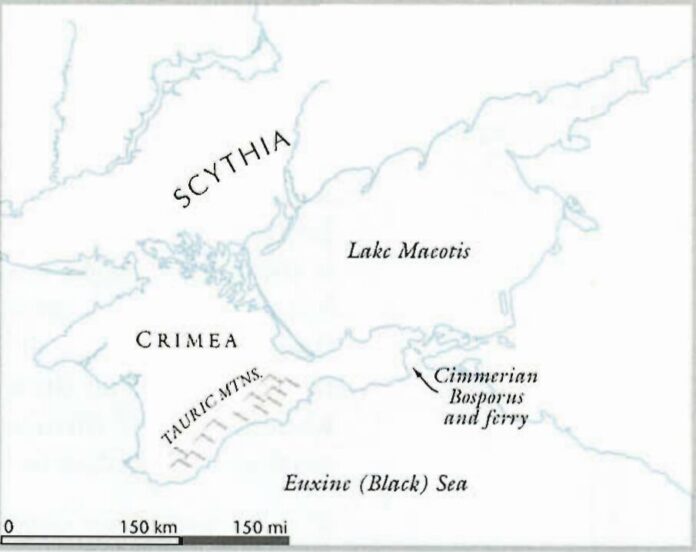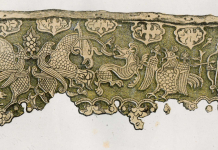“Old Scythia starts from the Ister [Danube River] and continues, facing the south and south wind, up to the city called Kerkinitis. From there, extending along the coast of the same sea, the land becomes mountainous and projects into the Pontus [Black Sea]. This region is inhabited by the Taurians up to what is called the Rugged Peninsula [Tavrika, Crimea], which extends down into the sea toward the east. (Herodotus 4.99). Herodotus wrote these lines in the 5th century BC during his personal visit to the area of present-day Ukraine. He most likely undertook that trip to learn more details of the grand event that took place in that area less than one hundred years before – namely, the attack of the army of the Persian king Darius the Great into Scythia. (For often missed details of that attack, see the Royal Scythia book). In view of the fact that the events of the sixth century BC were described as very recent events, the question arises what age did Herodotus imply when using the term ‘Old Scythia’? Can it be the ninth century BC when according to the widespread theory the Scythians migrated from Persia, present-day Iran? It does not seem logical that the ninth century BC would be ‘old time’ for a person living only four centuries later. Also, why would the Persians choose to live in that very area and how could they be connected with the Taurians who according to ancient historians had lived in that area in the second millennium BC already? [Here is a previous article on Taurians/Tauroscythians]
Doctor of Philological Sciences Academician Oleg Trubachev in his Indoarica specifies that the area of Old Scythia described by Herodotus ‘equals to the seashore of Odesa and Kirkinites’ gulfs.” He then mentions another passage in Herodotus:
“According to the Scythians, theirs is the youngest of all nations, and it came into existence in the following way. The first man born in this land, when it was still uninhabited, was named Targitaos. They say that the parents of this Targitaos were Zeus and the daughter of the River Borysthenes…” (Herodotus, 4.5)
Scholars point out that Targitaos in this legend is an autochthonous person in the sense that he is indigenous rather than descended from migrants or colonists. And that his mother is the River Dnieper/ Borysthenes. Thus Targitaos has to be directly connected to the Old Scythia. There was a monument to Targitaos in Ukraine. No certainty about its destiny at the moment because of the Russian invasion.
Analyzing the language of the Scythians who lived in the area of present-day Ukraine, Trubachev concluded that they were Indo-Europeans but not of Iranian descent. In his opinion, they were the Proto-Indoaryans. (Hence the name of his work). [To Be Continued]
The “Cradle of Civilizations” book explores the subject using different sources and new discoveries.










